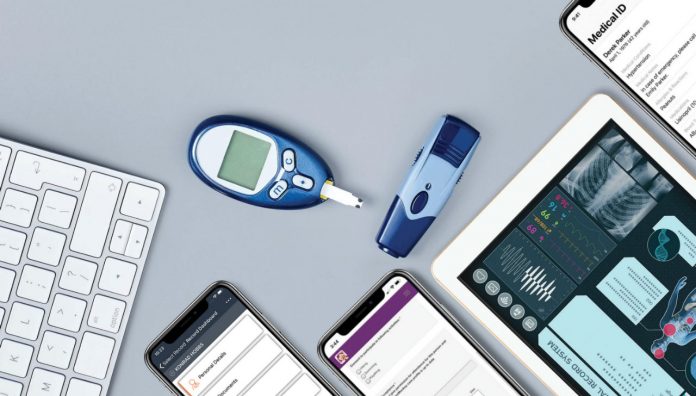A range of apps enable pharmacists and patients to see and/or manage their medical information.
As the benefits of My Health Record (MHR) become more widely known, its uptake and usage can be expected to grow. As pharmacists, we are well positioned to take a leadership role and guide patients on this topic, given our status as the most digitally enabled of all health professionals.
It is important for patients who wish to play an active role in their healthcare, or carers of vulnerable patient groups (e.g. children, disabled, elderly, mentally impaired), to understand what information is available to them and how they can access and control access to clinical documents (shared health summary, discharge summary, pathology, diagnostic imaging), prescriptions (prescriptions issued and dispense uploads), consumer documents (patient health summaries, patient notes) and Medicare documents (e.g. immunisation register, organ donor status, Medicare benefits).
How do patients access their MHR?
There are two ways for patients to access their My Health Record.
1. WEB PORTAL (myrecord.ehealth.gov.au)
This site:
- Is mobile-optimised
- Has 2-factor authentication access via SMS PIN on each occasion
- Offers full access to MHR (edit and view)
- Can edit and revoke permissions to health organisations as needed.
2. MOBILE APPS
At present, five third-party apps are currently authorised by the Australian Digital Health Agency to provide patients with a ‘view only’ access to their MHR. These are:
- Tyde (privately owned) offers quick access to limited MHR information access, but no real-time alerts. Access is via PIN or biometric fingerprint. The MHR data feed is functional to a limited set of information.
- Healthi (privately owned by Chamonix Health Solutions) offers quick real-time access to limited MHR information, though offers no notifications or alerts (currently).
- HealthEngine (owned by Telstra) offers quick real-time access to MHR information with almost all data available. It is integrated with the current Face-to-Face Appointment Bookings system.
- HealthNow (also Telstra) also offers quick real-time access to limited MHR information (documents, immunisations, organ donor status, medications, allergies). Enables MHR details to be added to patient registration forms.
- My Child’s eHealth Record is led by the National Children’s Digital Health Collaborative Network. Though not currently taking new registrations, pharmacists can register their interest in states leading initiatives/pilot work. Initiatives include the Child Digital Health Record (replacing the hard-copy baby books), the Digital Pregnancy Heath Record (replacing the hard-copy records), and the Child Digital Health Checks (continuation of Digital Pregnancy Health Record and Child Digital Health Record up to the age of 12).
What solutions are available for patients who want an online health record but don’t want an MHR?
CareMonkey
This stores health information on privately operated data centres in Australia. It is used in schools, sporting clubs and community organisations with a duty of care to collect, share and automate online health forms and medical records. It is free of charge for personal or family use.
Medical ID (Apple) Medical ID: ICE (Android)
If in crisis, these apps can share critical health information with bystanders (or key contacts) direct from your mobile phone lock screen. Find them by going through the Health app on your phone. They contain emergency contacts and summarised health information.
Practice point
Discuss with your pharmacist team how accessing a patient’s MHR can be integrated into your existing dispensing process.
Further information
- My Health Record at myhealthrecord.gov.au (Mobile MHR Access: www.myrecord.ehealth.gov.au)
- Healthi at yourhealthi.com.au/index.html#HowHealthiWorks
- HealthNow | My Health Record at healthnow.io/content/healthnow/about/my-health-record.html
- HealthEngine | My Health Record FAQ’s (2017) support. healthengine.com.au/hc/en-us/articles/115002536106-My-Health-Record-FAQs?mobile_site=true
- Tyde at tyde.com
- My Child’s eHealth Record | National Child Digital Health Collaborative Network at childrenscollaborative.gov.au
- CareMonkey at caremonkey.com
| Using a great smartphone app with your patients? Share your insights with your colleagues. Email australianpharmacist@psa.org.au and tell us about your experience and the results you’ve seen. |
Robert Sztar MPS is a pharmacist, author and consultant in the transformation of healthcare through technology.



 John Jones MPS, pharmacist immuniser and owner of My Community Pharmacy Shortland in Newcastle, NSW[/caption]
John Jones MPS, pharmacist immuniser and owner of My Community Pharmacy Shortland in Newcastle, NSW[/caption]


 Debbie Rigby FPS explaining how to correctly use different inhaler devices[/caption]
Debbie Rigby FPS explaining how to correctly use different inhaler devices[/caption]




 Professor Sepehr Shakib[/caption]
Professor Sepehr Shakib[/caption]

 Lee McLennan MPS[/caption]
Lee McLennan MPS[/caption]
 Dr Natalie Soulsby FPS, Adv Prac Pharm[/caption]
Dr Natalie Soulsby FPS, Adv Prac Pharm[/caption]
 Joanne Gross MPS[/caption]
Joanne Gross MPS[/caption]





